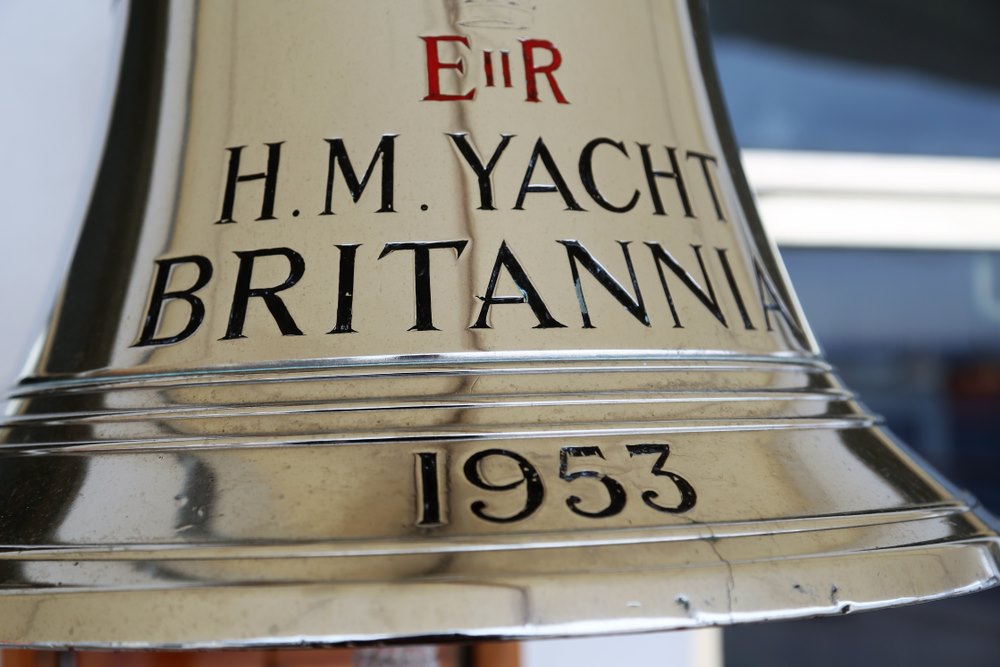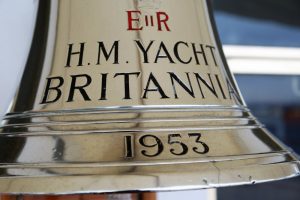
07 May The Royal Yacht Britannia… the end of a royal line?
 The Royal Yacht Britannia; such an iconic symbol. The Queen even shed a tear publicly when the vessel was retired in 1997. In some ways, therefore, it’s no surprise that the recent sad passing of Prince Phillip has prompted discussions for a new royal yacht. He was the Duke of Edinburgh; and she now sits in dock in Edinburgh. He was also a fierce supporter of naval traditions, having enjoyed a long naval career. And, let’s face it, he and the Queen between them clocked up nearly a thousand state visits around the world in her. She did her part for this country, eh?
The Royal Yacht Britannia; such an iconic symbol. The Queen even shed a tear publicly when the vessel was retired in 1997. In some ways, therefore, it’s no surprise that the recent sad passing of Prince Phillip has prompted discussions for a new royal yacht. He was the Duke of Edinburgh; and she now sits in dock in Edinburgh. He was also a fierce supporter of naval traditions, having enjoyed a long naval career. And, let’s face it, he and the Queen between them clocked up nearly a thousand state visits around the world in her. She did her part for this country, eh?
Britannia’s beginnings
Interestingly, Britannia was actually the 82nd royal vessel to have been built; the first was in 1660 for King Charles. Final designs had been submitted at a time when the health of King George VI was beginning to fail. And she was actually commissioned only two days before he died on 6th February, 1952.
Her launch
It took just a year to complete her, and a fun sense of mystery shrouded her name during the process. Her moniker was only discovered at her official launch in April, 1953, when Elizabeth cracked a bottle of wine on her; bubbly was to ostentatious for such severe post war times. “I name this ship Britannia… I wish success to her and all her sail in her,” she said; and the historic royal yacht began her career.
Her design
Considerable thought was given to infusing Britannia with meaningful history. The gold and white binnacle from HMY Royal George was ensconced on her veranda deck. Linen originally made for Queen Victoria’s bed on a previous royal yacht was also included in the inventory. And her steering wheel was donated from HMY Britannia – her namesake older sister, a racing yacht, who had been built in 1893 for King Edward VII.
It’s worth noting that Britannia was purposely designed to keep appearances lower key than one would expect of a royal yacht. Britain was a country recovering from war still, and anything too lavish would simply have been inappropriate. However, even in later years, the approach taken received minimal updates throughout her service.
That’s not to say she was spartan, though, for she was definitely still graced with a homey feel. Admittedly the State Dining Room could accommodate 56 people for a plush sit-down meal, but you’d expect that. This was a vessel that would host key figures such as Nelson Mandela and countless US presidents. She had a formal staircase where the Queen would meet and greet guests. And the Queen and her consort each had their own bedroom and sitting room. But a delightful touch included a phone system that matched the configuration of the telephones in Buckingham Palace. Plus, early on, the Queen had her Rolls-Royce Phantom V hoisted on to the ship so she could use the car at her destinations.
Her dual purpose
However, putting these touches of grandeur aside, she was actually designed to be able to function as a hospital when times required. And having been first dreamt up within just a few years of World War II ending, it’s perhaps no surprise.
The main veranda was reinforced to bear the weight of a helicopter. And the general layout was set to facilitate the switch in purpose fairly easy; even the laundry was made significantly larger than a standard naval vessel. Britannia was never used for her dual purpose in the end. However, she was pressed into service in 1986 to help evacuate European nationals from South Yemen.
The life of her crew
It’s no surprise that the position of commanding officer came with prestige. Thus it was always filled by a flag officer, and more often than not a Rear Admiral. The crew had to use hand signals rather than shouted commands to ensure a calm atmosphere prevailed. And believe it or not, they were also the last in the royal navy to sleep in hammocks; which they did until 1973!
What is of surprise, though, is that the crew couldn’t actually see where they were going. Britannia’s steering wheel was on the deck below the wheelhouse, and not on the bridge. Thus to mitigate the obvious issues this caused, they used voice pipes from the bridge to issue navigational commands.
A honeymoon hideaway
The honeymoon suite – which was the only room that had a double bed – was used four times. Princess Margaret honeymooned with Anthony Armstrong-Jones in 1960, enjoying the delights of the Caribbean. Princess Anne enjoyed the luxury of the yacht with Captain Mark Phillips in 1973. Prince Charles and Princess Diana sucked up the Mediterranean sun in 1981. And Prince Andrew and Sarah Ferguson headed to the Azores in 1986.
But Britannia wasn’t just for honeymoons. She was a godsend for holidays too. The royal family would often scoot away to cruise around the western isles of Scotland before dropping the Queen at Balmoral. On these trips, they’d enjoy barbecues on the islands, and apparently the veranda stairway was even occasionally turned into a waterslide for the youngsters.
As such, therefore, Britannia provided a haven and many memories, and the Queen’s tears when she was decommissioned are completely understandable. There were plans initially for her to be replaced, however the government, then led by Tony Blair, decided not to fund the project. Now, Britannia sits in Leith presenting her historical wares to the public as a floating museum and events venue. The clocks were all stopped at 3:01, the exact time the Queen disembarked for the last time.
But is that really the end of the story? Is there are a possibility for an 83rd royal vessel? The idea has most definitely been mooted. It’s believed that Prince Philip was in favour; his naval career and many nautical miles spent on Britannia assured that. A group of MPs are touting the idea too, though Boris Johnson has simply suggested it’s a nice idea and left it at that. Mind you, designs have already been drawn up by the UK yacht designer Andrew Winch; though that was some time ago. Winch has been keen to explain that the configuration he’s proposed would lend itself to many purposes. And this would enable the royal family to continue to support the nation’s efforts in times of need.
So who knows. Perhaps this nation may still yet enjoy a new symbol that represents our keenness to connect across the globe through travel, and our willingness to charitably support those in need when required. It’s a nice thought… and one we feel we should leave you with.



